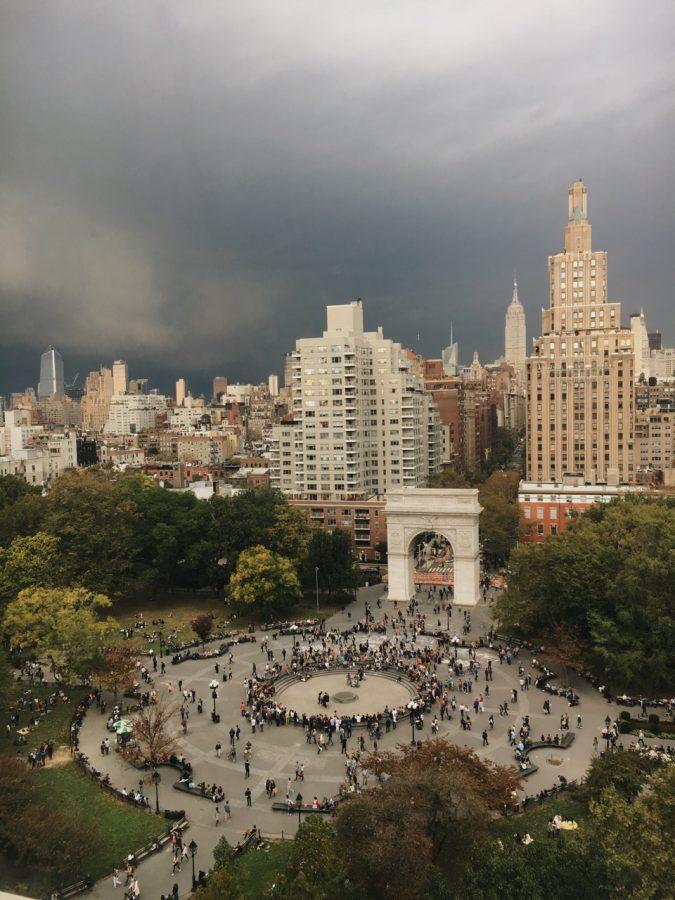Langone Superstorm Proofing Nears Completion After Sandy Damage
New York has experienced severe weather conditions in the past few years, prompting NYU Langone to fortify itself.
November 2, 2016
The Federal Emergency Management Agency granted NYU Langone $1.1 billion in federal aid after Hurricane Sandy hit New York City on Oct. 29, 2012. NYU Langone sustained major flooding that year, experienced power outages throughout the hospital and even lost its main communication system and its emergency system. This led to an evacuation of over 300 patients who were later transported to nearby hospitals.
The completion of superstorm proofing the building is almost finished.
In the four years since the storm, NYU Langone used its Federal grant — the second largest in FEMA’s history — to recover from the tragedy and has worked towards making the hospital completely secure from future storms. New York senator Charles Schumer said in a July 29, 2014 press release that this large sum of money was awarded because of NYU Langone’s prominence in the city.
“NYU Hospital is a critical non-profit institution that sustained massive damage in Superstorm Sandy,” Schumer said. “This award will enable them to fully recover and provide world-class health care to countless New Yorkers.”
The grant was used to remediate the damage that occurred during Hurricane Sandy, as well as to build infrastructure to better protect NYU Langone from future storms.
However, Vicki Match Suna, the Vice Dean and Senior Vice President for Real Estate Development and Facilities at NYU Langone, said that Sandy affected much more than just Tisch Hospital, which is part of NYU Langone’s main campus..
“The medical center’s main campus — at 550 First Avenue, and fully occupying the east side of First Avenue between 30th and 34th Streets — also encompasses clinical facilities, extensive research facilities, the NYU School of Medicine and a number of administrative facilities,” Suna said. “Shortly after the storm, more than 800 individuals, 90 research labs and 14 departments involved in medical research at NYU Langone were relocated from the main campus.”
She said that after the storm, 15 million gallons of water were safely pumped from the main campus, and the medical center reopened in sections as repairs were made. Suna said that Campus Transformation, the plan to entirely renovate NYU Langone was launched 2007, and the storm accidentally helped expedite this process.
“We quickly saw the incident and its aftermath offered a key opportunity to better understand the existing risk that we face,” Suna said. “Campus Transformation’s overarching strategy is to reorganize and optimize the medical center’s physical resources, [and] to accommodate future growth on the main campus and beyond.”
Suna said that the various renovations include an energy building that will act as the centerpiece of NYU Langone’s plan to become a resilient medical center.
“The Energy Building positions NYU Langone as a leader in sustainability, while ensuring we remain a reliable source of care during times of natural disaster or a utility power interruption,” Suna said. “In addition, the campus perimeter is being protected with a flood wall system (for both current and future buildings) and vulnerable areas have been structurally reinforced.”
She said that with a new combined heat and power plant, emergency generators and two different sources of backup power, the medical center will be able to remain operational even in severe weather conditions.
The hospital also used the shutdown following the storm to speed up the emergency room construction — doubling the size of the previous one — which otherwise would have been built in stages to mitigate the disruption of patients. It was also elevated to prevent future flooding. Eventually, the upgrades will include digitizing all patient records and mounting large video screens in each room.
“All new construction plans for buildings on the main campus have been updated,” Suna said. “By 2018, the Medical Center will be constructed with protections to be able to withstand a storm well above the 500-year flood level.”
CORRECTION: This article previously stated that the grant that NYU Langone received was used to construct new buildings, when it was in fact used to mitigate the damage from Hurricane Sandy. The article has also been updated to reflect that the storm inadvertently sped up the process; not the grant. WSN regrets the errors.
Email Arushi Sahay at [email protected].



























































































































































